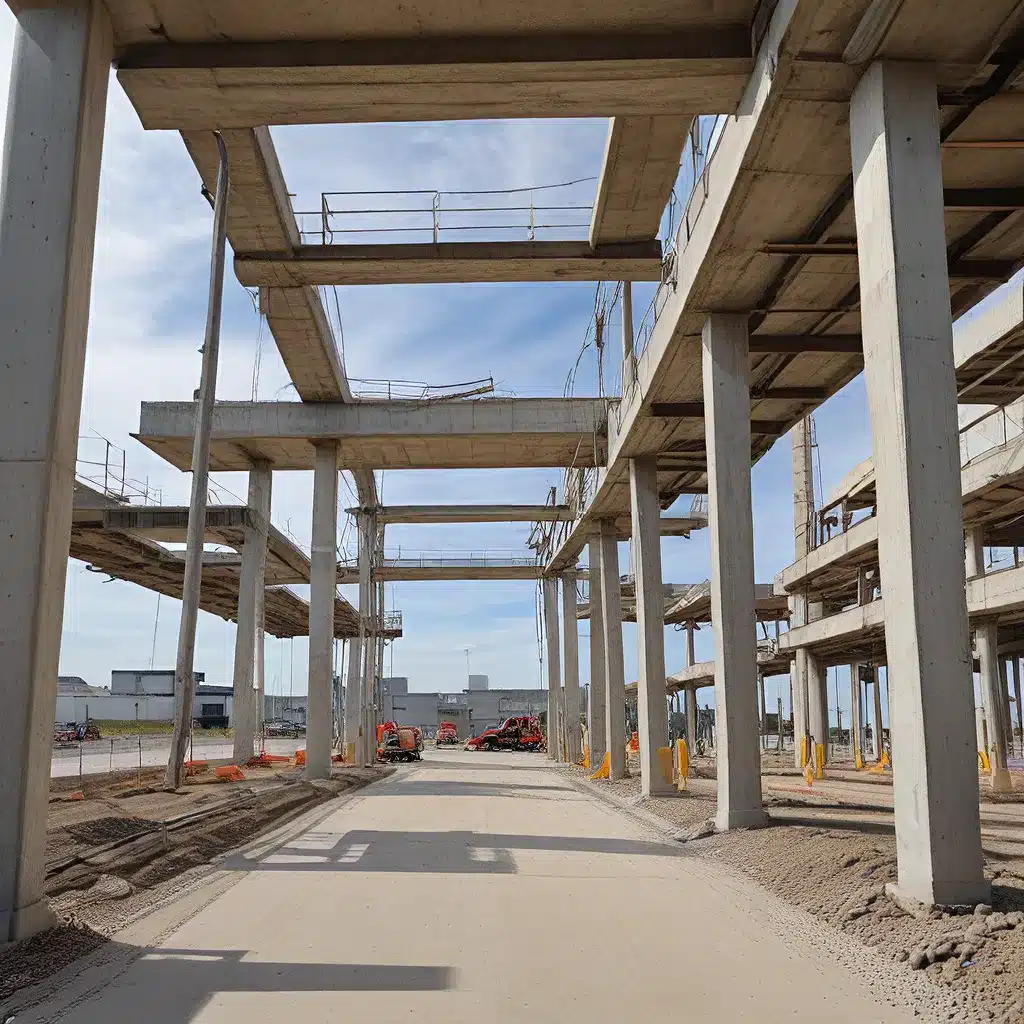
The Concrete Conundrum: Tackling a Stubborn Industry’s Carbon Footprint
As I strolled through the bustling streets of downtown, I couldn’t help but marvel at the towering skyscrapers, sprawling highways, and sturdy bridges that formed the backbone of our urban landscape. The sheer scale and durability of these concrete structures are a testament to the ingenuity of human engineering. Yet, hidden beneath their impressive facades lies a sobering truth: the concrete industry is responsible for a staggering 8% of global carbon emissions.
According to Rocky Mountain Institute (RMI), the demand for cement, the key ingredient in concrete, is expected to increase by 48% by 2050 as developing countries continue to urbanize. This presents a daunting challenge: how can we reconcile the concrete industry’s vital role in infrastructure development with its significant environmental impact?
The answer, my friends, lies in a multifaceted approach that harnesses the power of innovation. Join me as we delve into the cutting-edge strategies that are driving the future of concrete construction and paving the way to a more sustainable tomorrow.
Leaner, Greener Designs: Optimizing Concrete Usage
The first step in tackling the concrete conundrum is to use less of the material, without compromising the structural integrity or functionality of our buildings and infrastructure. This may seem counterintuitive, but as RMI’s research has shown, there are several innovative methods that can lead to substantial carbon savings.
One such approach is lean design, where structural engineers and architects leverage advanced software to explore a wide range of design options, prioritizing material efficiency over cost minimization. By employing these automated tools, the designers of New York’s Freedom Tower and Shanghai’s iconic Tower were able to reduce their concrete usage by 40% and 24%, respectively.
Another strategy is to repurpose existing concrete from demolished structures, rather than relying solely on new, carbon-intensive materials. While the feasibility of this approach varies by region and project requirements, it represents a promising avenue for reducing the industry’s environmental footprint.
Concrete Composites: Lowering the Carbon Intensity
But the concrete conundrum doesn’t end there. Even when we use less of the material, the production of cement, the key binder in concrete, still accounts for a significant portion of the industry’s emissions. Fortunately, innovative solutions are emerging to address this challenge.
One promising approach is the increased use of supplementary cementitious materials (SCMs), such as ground granulated blast furnace slag, fly ash, and calcined clays. These industrial by-products can partially displace the carbon-intensive ordinary Portland cement, without compromising the performance of the final concrete mix.
In fact, CEMEX, a leading global cement and concrete company, has developed a low-carbon cement called ECOPlanet that incorporates these innovative SCMs. By using this cement, the carbon emissions of a traditional five-story building can be reduced by a remarkable 32%, with minimal impact on construction costs.
But the quest for greener concrete doesn’t stop there. Researchers and industry pioneers are exploring a wide range of other innovations, from advanced admixtures that enhance concrete properties to entirely new cement formulations that reduce the need for traditional clinker.
The Role of Policy and Standards
While innovation is the driving force behind the concrete industry’s transformation, it’s important to recognize the critical role of policy and standards in facilitating this change. As carbon becomes a key consideration in infrastructure development, building codes and market preferences must evolve to accommodate the use of low-carbon concrete.
Organizations like the Global Cement and Concrete Association (GCCA) are leading the charge, setting ambitious targets for reducing the average global clinker content in cement by 18% by 2050. Initiatives like the First Movers Coalition and the Industrial Deep Decarbonization Initiative are also driving demand for low-carbon concrete, which will in turn spur further innovation and investment in this vital industry.
A Collaborative Approach to Concrete Innovation
The transformation of the concrete industry is not a solo endeavor. It requires the collective effort of designers, engineers, policymakers, and industry leaders, all working in tandem to drive progress and overcome the challenges that lie ahead.
At Concrete RT Townsville, we’ve embraced this collaborative spirit, forging partnerships with leading research institutions, industry associations, and innovative suppliers like CEMEX. By staying at the forefront of the latest advancements in concrete technology, we’re able to offer our clients the most sustainable and cost-effective solutions for their projects.
A Future Built on Concrete Innovations
As I stand amidst the concrete jungle, I can’t help but feel a sense of excitement for the future. The concrete industry is on the cusp of a radical transformation, with innovative minds working tirelessly to reduce its carbon footprint and pave the way for a more sustainable built environment.
From lean design and concrete repurposing to the development of low-carbon cement blends and advanced admixtures, the tools are already in our hands. All we need to do is embrace this change, collaborate across the industry, and unlock the full potential of concrete innovation.
So, let’s roll up our sleeves, dive into the details, and build a future that’s not only structurally sound but also environmentally responsible. After all, the very foundations of our civilization depend on it.

